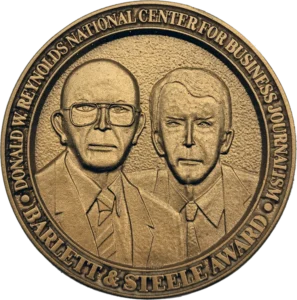Regardless of the headlines you may be seeing as of late on the rollback of diversity, equity and inclusion (DEI) programs, the fact remains that representation of minorities in journalism still lags that of the general population. New generations of journalists have been reported to be more diverse than previous generations, but more work is needed to ensure a multitude of voices is heard.
In support of Black History Month and increasing diverse perspectives in the newsroom, we’ve gathered some facts about Black representation in U.S. newsrooms as well as resources for journalists and students to explore. Though this is by no means a comprehensive list, these resources are a good place to start if you are looking for networking opportunities, training, or perhaps your next story idea.
Why representation matters
Although Black Americans make up approximately 11% of the American workforce, a 2023 Pew Research Center study found that just 6% of U.S. reporting journalists identify as Black. The greatest lack of representation is in beats such as energy, science and technology, where they make up just 2-3% of reporters.
Pew Research Center has previously covered the lack of diversity in U.S. newsrooms. From analyzing data of the American workforce from 2012-2016, they found that non-Hispanic white employees made up 65% of the country’s workforce yet represented 77% of newsroom employees. Although the gender gap appears to be shrinking in younger generations in newsrooms, employees are still more likely to be white compared to the general workforce. So, how does all this affect news consumers?
In another study, over 40% of Black adults surveyed felt Black journalists did a better job at understanding them and covering issues related to race compared to other journalists. When looking at the data by age group, this held true for over half of respondents aged 18-29. This means well over a third of Black adults feel Black journalists better represent their interests.
According to reporter Maria Curi, a panelist at SABEW’s recent webinar on bringing diverse perspectives to business stories, “We sometimes forget the power we have as journalists to make editorial decisions. We may not tell people what to think, but we do tell people what to think about.” Whether you are a current or an aspiring journalist, it helps to keep these diverse perspectives in mind and know that you have the power to bring awareness to different experiences when there is a new policy, business deal, or other story.
Now for some resources that can help bridge the gap.
National Association of Black Journalists (NABJ)
NABJ is a nonprofit organization that “advocates for diversity in newsrooms and news content” and serves to support Black journalists and media professionals both in the U.S. and worldwide. They offer many resources, such as workshops, conferences, panels, and other networking opportunities. They also publish a monthly e-newsletter for members. Students, journalists and other media professionals are all welcome in NABJ.
There are various task forces within NABJ where members can come together to focus on specific areas of interest, such as business journalism.
NABJ also holds an annual career fair every summer and has an online resource to help find industry career opportunities. There are student chapters across the U.S. to help students get involved, including a chapter at ASU’s Walter Cronkite School of Journalism and Mass Communication. Arizonans can also check out the Arizona Association of Black Journalists.
More resources you might want to check out
Black Public Media works with independent media makers to develop and distribute content about the Black experience, including documentaries, podcasts, and more. They also provide networking and funding opportunities.
The Application and HBCU 20×20 provides free academic and career development resources, such as mock interviews, to help support people of color.
Word in Black is a collaboration of 10 Black news publishers reporting on a range of topics with the mission “to be the most trusted news and information source for, about, and by Black people.”
The Knight Foundation compiled a great list of associations, training and funding opportunities to support people of color in the news industry.
The United States Census Bureau, U.S. Bureau of Labor Statistics, and Black Wealth Data Center have a treasure trove of data available to explore if you’re looking to dive deeper into the “African Americans and Labor” theme for 2025 set by the ASALH, the founders of Black History Month.
–
Is there another resource we should add to this list? Give us a shout through email or on social media @bizjournalism!











